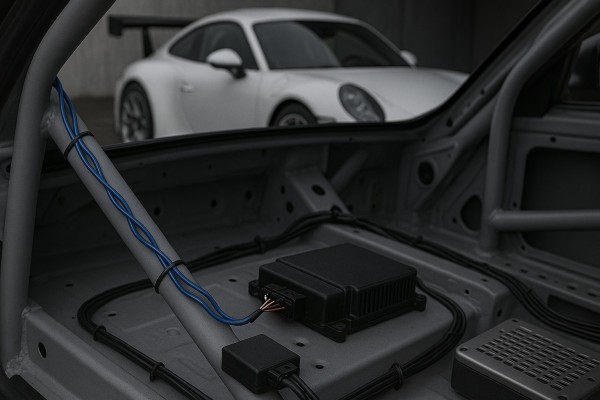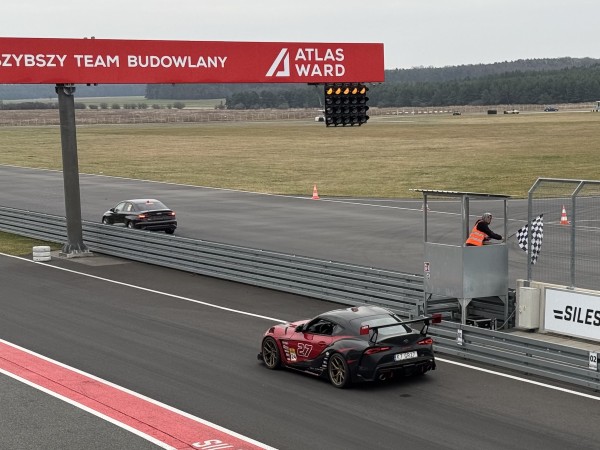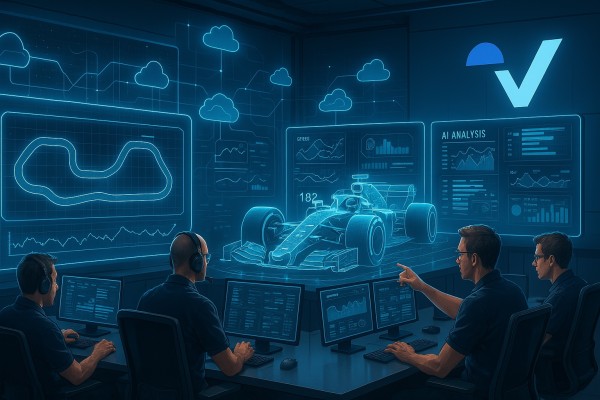Guide
How race car data analysis helps you shave seconds off your lap times
by Paweł Sobociński |
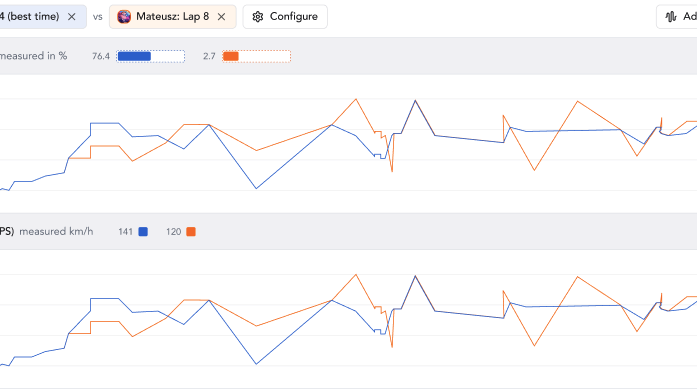
In racing, every fraction of a second counts. Whether you're a weekend enthusiast or a professional driver, finding ways to improve your lap times is essential to gaining an edge on the track. That’s where race car data analysis comes in.
With the power of advanced data logging and analysis tools, you can gain deep insights into your performance, identify areas for improvement, and make data-driven decisions that lead to faster lap times. This isn't about guessing what might work; it's about understanding exactly where you're losing time and how to fix it.
Here, we’ll explore how race car data analysis can help you shave seconds off your lap times by focusing on key aspects of your driving, vehicle setup, and track strategy. From real-time telemetry to post-session analysis, we’ll show you how harnessing the power of data can make a big difference on the track.
Why Data Analysis is Crucial in Racing
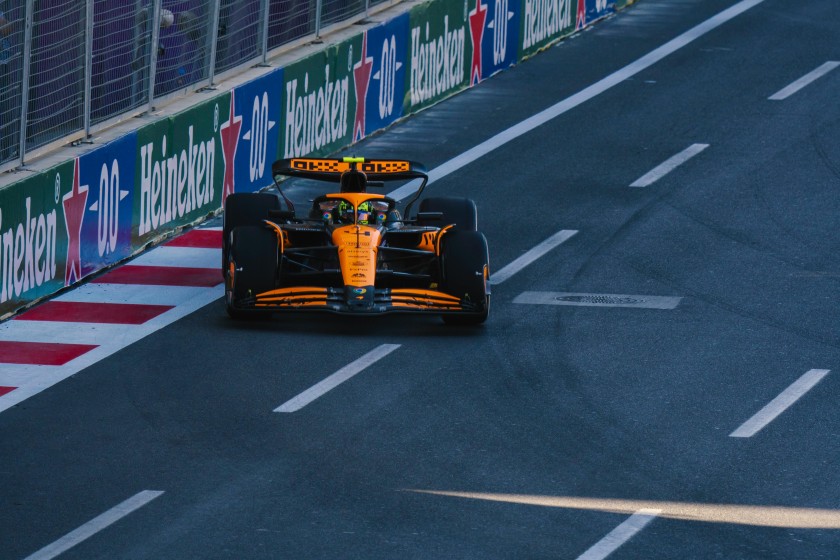
Data analysis has become a game-changer in the world of racing, offering valuable insights that lead to better decision-making and improved performance on the track. Professional racing teams have long relied on different data systems to fine-tune their vehicles and strategies.
These systems provide critical feedback on car dynamics, tire performance, fuel usage, and more, enabling teams to make adjustments that can shave crucial seconds off lap times.
Improving Driver Techniques
For drivers, the power of data lies in its ability to highlight areas for improvement. By analyzing different laps, drivers can identify patterns in their performance. Perhaps they’re losing time on corner entry or braking too late in certain sectors.
Data analysis makes these weaknesses visible, allowing drivers to adjust their techniques accordingly. Comparing two drivers on the same track can reveal differences in braking points, throttle application, and racing lines, offering a clear guide for improving their own performance.
Enhancing Car Setups
Instant access to real-time telemetry and later analysis of logged data also play a major role in driver development. By reviewing telemetry during practice sessions, drivers can fine-tune their approach—whether it's optimizing throttle usage to stay closer to full throttle on straights or adjusting their braking zones to maximize lap times. Through analysis techniques like sector time breakdowns, drivers can track their performance over multiple sessions and see exactly where improvements are needed.
Continuous Improvement
This level of detail leads to continuous improvement. With data analysis, drivers and teams can make informed decisions about car setups, tire strategies, and track approaches, allowing for consistent progress over time. Data logging and analysis offer the insight needed to take racing performance to the next level.
What Does Race Car Data Analysis Involve?
Race car data analysis involves gathering and reviewing a variety of key data points that are critical to understanding vehicle performance and driver behavior.
These metrics include lap times, speed, braking points, and throttle input, all of which provide valuable insights into how both the car and driver are performing throughout a session.
Key Data Points
- Lap Times: The most straightforward metric, but analyzing lap times, particularly sector times, gives you a more detailed picture of where you’re gaining or losing time on the track.
- Speed: Knowing your speed at key points on the track can help you understand if you're optimizing straights and corners.
- Braking Points: Analyzing when and where you’re braking helps identify whether you're too early or too late into corners, allowing you to adjust for better cornering.
- Throttle Input: Monitoring how much throttle you’re applying at various points can pinpoint inefficiencies or missed opportunities for speed.
Tools for Analyzing Data
To make sense of these data points, specialized tools and apps are essential. Data logging apps, like Vetkuro, capture real-time telemetry, providing insights into your performance.
These apps break down your data after the session, highlighting key areas where improvements can be made. Some apps even include video overlay, which syncs video footage with telemetry data, offering a visual representation of your driving.
External Devices for Enhanced Precision
For even more detailed data, external devices like GPS receivers and data acquisition systems offer additional metrics such as engine performance, tire pressure, and suspension dynamics.
By integrating these devices with your app, you can analyze every aspect of your car’s performance, providing a more comprehensive view of your session and setting the stage for faster lap times.
How to Start with Race Car Data Analysis
Race car data analysis may sound complex, but with the right tools, it’s accessible and highly beneficial for racers of all levels. You don't need an engineering degree to understand these simple metrics. Here's a simple approach to get started with analyzing your data.
Collecting Data Using a Telemetry-Enabled App
The first step in data analysis is to collect the necessary data. With a telemetry-enabled app like Vetkuro, you can easily record crucial metrics like lap times, speed, braking points, and throttle input during a session.
These apps leverage the data power of modern mobile devices and GPS receivers, capturing real-time telemetry data from your car. Many apps can also integrate with data acquisition systems, which provide even more detailed insights into your car’s performance. All you need is to mount your phone or an external device securely in your car, and you're ready to start logging data.
Analyzing Key Metrics Post-Session
Once your session is over, it’s time to analyze the data. Review your lap times and identify any sectors where you're slower than usual. Look at braking points, throttle input, and speed to spot areas where small adjustments could improve your lap times.
With tools like video overlay, you can correlate your driving behavior with the telemetry data, allowing for a clearer understanding of how your driving affects performance. You’ll be able to see patterns that reveal inefficiencies in your driving technique or car setup.
Applying Findings to Improve Performance
After analyzing the data, apply your findings to your next session. Maybe you need to brake earlier or carry more speed through a corner. Small changes based on data insights can have a big difference in lap times.
Over time, consistent data collection and analysis will lead to noticeable improvements in both your driving technique and vehicle setup, helping you get faster with each session.
Common Mistakes in Data Analysis
Race car data analysis can provide powerful insights into performance, but it’s easy to make mistakes when interpreting the data. Here are some common errors to avoid.
Misinterpreting Data Without Context
One of the most common mistakes in data analysis is misinterpreting data without considering the context of the session. For example, looking at lap times in isolation may not tell the full story. A slow lap could be caused by an off-track moment, like hitting a curb, or it could simply be due to traffic on the track.
Without considering external factors, such as weather conditions or track temperature, you might draw incorrect conclusions. It's important to assess data in relation to the conditions of each session and compare performance over multiple laps or sessions to spot trends.
Overlooking Critical Insights Like Braking Points and Acceleration Zones
Another common mistake is overlooking specific data points like braking points and acceleration zones. These are often where valuable improvements can be made. If you’re not analyzing how and where you brake or accelerate, you might miss the opportunity to improve your driving technique.
For example, breaking too late or too early at a corner can cost valuable time. Similarly, not utilizing full throttle at the right points can limit your speed. If these areas aren’t examined in-depth, it’s easy to overlook a big difference in lap times.
To avoid these mistakes, it's crucial to look at the full picture—considering all data points together—and to dive deeper into specific areas like braking, throttle input, and cornering. Understanding the context and focusing on key areas of improvement will help you use data more effectively to improve your performance on the track.
How the Vetkuro App Simplifies Race Car Data Analysis
The Vetkuro app is designed to make race car data analysis accessible and actionable for all drivers, from amateurs to professionals. With its powerful features and user-friendly interface, it simplifies the process of understanding and improving performance on the track.
Telemetry Analysis Tools
One of the standout features of the Vetkuro app is its telemetry analysis tools. These tools allow you to track key metrics such as lap times, speed, acceleration, and braking points in real time. After a session, the app provides a detailed breakdown of the data, allowing you to compare your performance against previous sessions or the best laps.
This helps you spot trends, identify areas for improvement, and make more informed decisions about driving technique and car setup. With predictive lap timing, the app shows where you can improve and what changes might shave off valuable seconds.
Interactive Driving Line Maps
Another powerful feature of the Vetkuro app is its interactive driving line maps. These maps visually display your racing line through each corner, showing you exactly where you can improve.
The app highlights key sections of the track, so you can see where you may be taking a wider line than necessary or braking too early. This visual representation makes it easier to understand how slight adjustments can lead to faster lap times.
Session Summaries with Actionable Insights
After every session, Vetkuro provides a session summary that highlights your key metrics. These summaries break down your performance in an easy-to-understand format, so you can quickly assess where you’re succeeding and where changes are needed.
This clarity helps you take immediate action on the track, allowing you to make adjustments during your next session to optimize performance.
Sign up to be notified when Vetkuro app will be avalible to download and start your journey in race car data analysis. Unlock valuable insights to improve your performance and shave seconds off your lap times!

